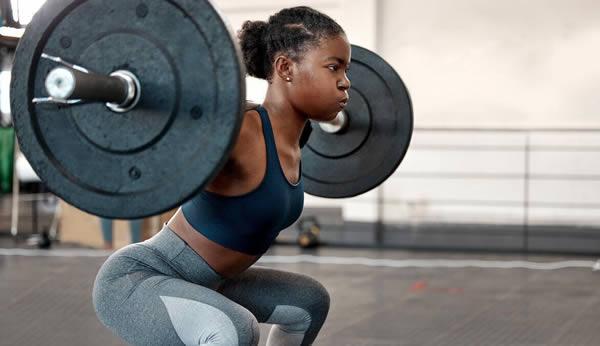
Heather Jeffcoat, DPT
While pelvic floor dysfunction is not ideal for anyone—after all, these deep stabilizer muscles support sexual function, bladder and bowel control, sound posture, plus arm and leg power, among other tasks—for people who like to pick things up and put them down (i.e. lift weights), it can lead to improper movement mechanics, as well as leakage mid-lift.
So if you regularly hit the weight room with the goal of getting stronger, doctor of physical therapy Corey Hazama, DPT, an expert with Pelvic Gym, a pelvic health education platform, says properly strengthening and engaging your pelvic floor is as important as any other muscle group you’re training. Below are six things you should know about the pelvic floor and its function if you lift —including exactly how to brace your core and breathe while strength training in order to optimize your efforts and avoid injury.
1. First things first: Everyone has a pelvic floor
Before diving into the specific relationship between lifting and the pelvic floor, let’s get on the same page about who has pelvic floors. Spoiler alert: all of us. As Dr. Hazama explains, your pelvic floor is a collection of 14 muscles that stretch from the tailbone to the pubic bone, and hip to hip sort of like a trampoline or hammock. They are not sex specific.
The only difference amongst people of different sexes is which organs the pelvic floor muscles support, according to doctor of physical therapy Heather Jeffcoat, DPT, author of Sex Without Pain: A Self-Treatment Guide to the Sex Life You Deserve. For instance, if you have a uterus, that will be one of the organs this muscle group supports, otherwise the organ line-up will include your bladder, small bowel, and rectum, she says.
Continue reading the full article here at the Well + Good website.
